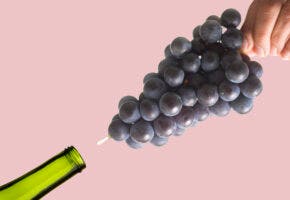What is Pinotage
A cross between Pinot Noir and Cinsault, Pinotage was first cultivated in 1925. Early-ripening, it produces grapes with high sugar levels and must be controlled in the vineyard through thinning and intentional vineyard stressing, like water management. Vines thrive in warmer, drier climates, although they have been known to succeed in cooler microclimates, too. Like Cinsault, Pinotage vines are hearty and adaptable.
Pinotage grapes are moderately pigmented and produce a ruby-red juice that offers bracing acidity on the palate. Pinotage also offers distinctive aromas, some of which can be regarded as off-putting. The grape is sometimes associated with plastic, acetone or even rubber bandages, though, at its best, it produces smoky, rich-fruited wines with deep strawberry and sour cherry notes at its core.
Pinotage Regions
An intentional cross of two varieties of vitis vinifera (not to be confused with a hybrid species of grape), South Africa’s signature grape variety remains the country’s most popular red grape variety. Traditional bottlings were bold, powerful and structured, though a new wave of more delicate, refined examples are taking center stage among the latest generation of esteem winemakers and earning new respect and appreciation from thirsty consumers.
Pinotage is also grown in other countries, though no other country has embraced the variety as wholly as South Africa has. It appears in Canada, New Zealand, Brazil, Israel, the United States and even Zimbabwe. In the United States, winemakers from Arizona to Michigan to California to Virginia have experimented with the grape, though American audiences have not yet fully embraced it. In Germany, winemakers have also started planting Pinotage, though it is not currently widespread there.
Pinotage grapes are found in red, rose, and dessert wines.














